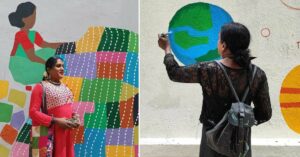TBI Blogs: The Next Time You’re in Jodhpur, Visit the ‘Chappalon Wali Gali’, and Help Empower Artisans in Need!
In the narrow lanes of the historical city of Jodhpur, a community has been creating the signature Jodhpuri chappals tirelessly for generations.
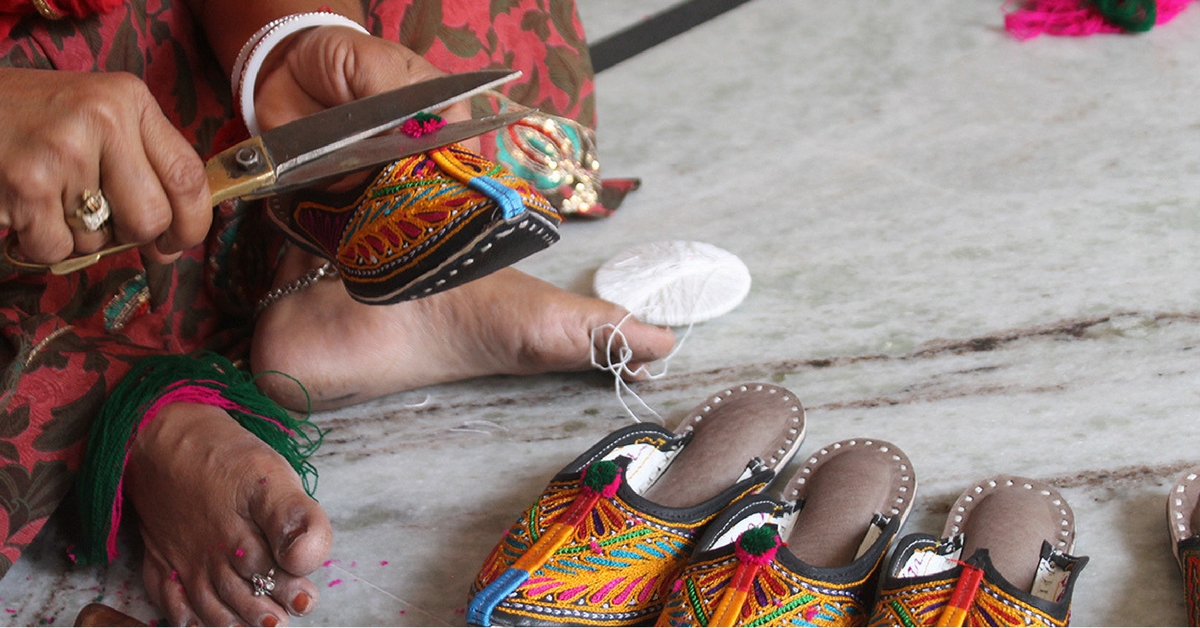
In the narrow lanes of the historical city of Jodhpur, a community has been creating the signature Jodhpuri chappals tirelessly for generations.
Art. The term is vast and enveloping, a gamut of expressions. It is extremely difficult to define art in its entirety. It is highly appreciated in galleries, traversing through paintings, murals, and sculptures, and at the same time, unexplored, found in hundreds of nooks and crannies of ever-so-vibrant India. Art is created everyday by hundreds of artisans, unknown and unheard of. In one of its documentation trips, Project Kalayatra navigated through Jodhpur’s Sardar Market to discover a community of artists creating one of India’s favourite footwear—the Jodhpuri chappals.
The history of footwear in India can be traced back to the Vedic period. To put it in easy terms, Indians have been wearing shoes and sandals, forever. In the midst of the evolution to international brands and unconventional designs, there have been things closer home, which still find abundant space in our hearts and wardrobes alike.
Jodhpuri chappals, enclosed in multiple hues, are the protagonist today.
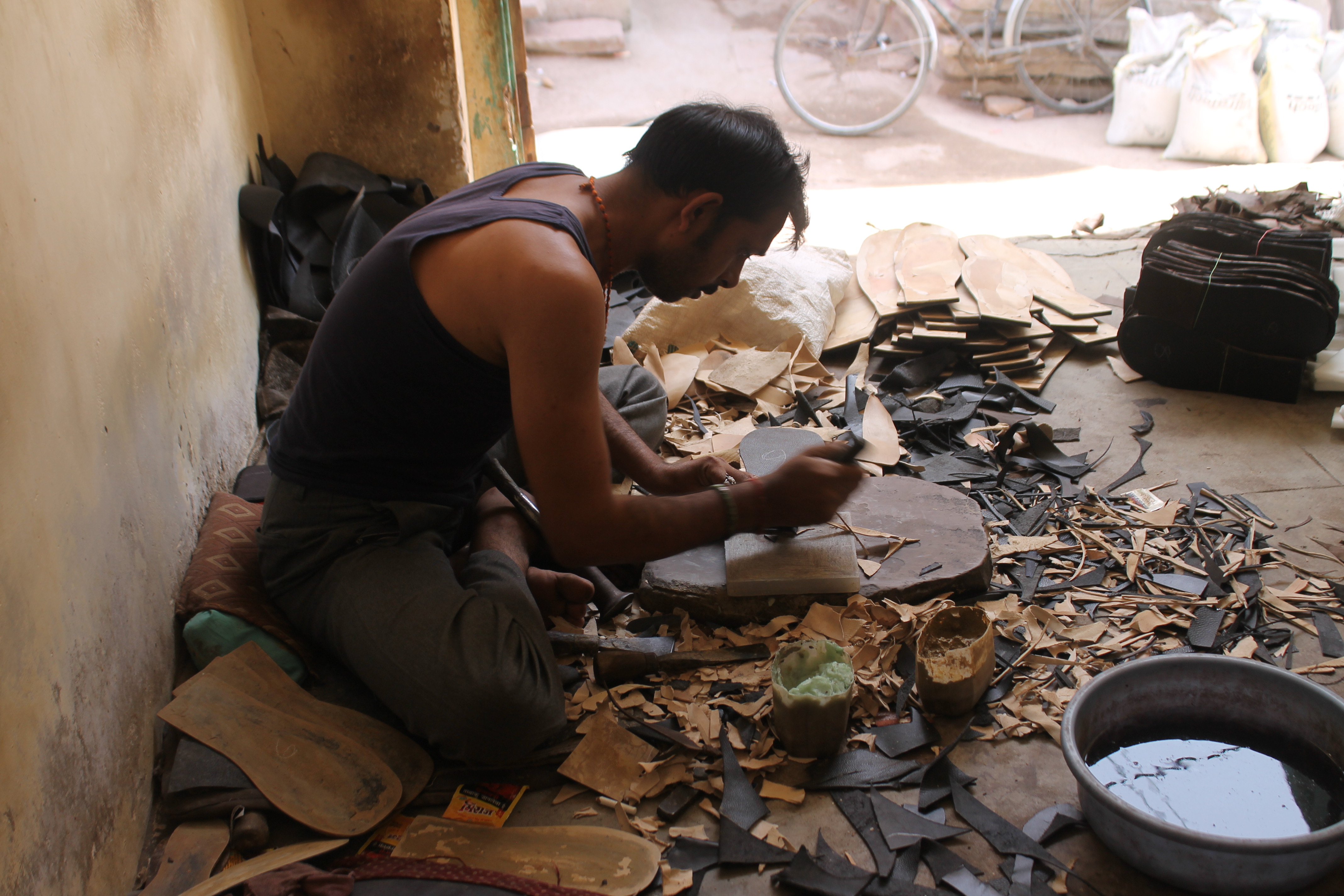
A walk through the “Chappalon Wali Gali” behind the city’s Clock Tower leads to a narrow nondescript lane. Awaiting no second glances, the lane looks like any of the hundreds winding around Jodhpur, famous for its 15th century Mehrangarh Fort. “Chappalon wali gali” literally translates to “the Footwear Street”.
Lined on both sides are a dozen houses, rhythmically constructing their version of art in the form of Jodhpuri chappals.
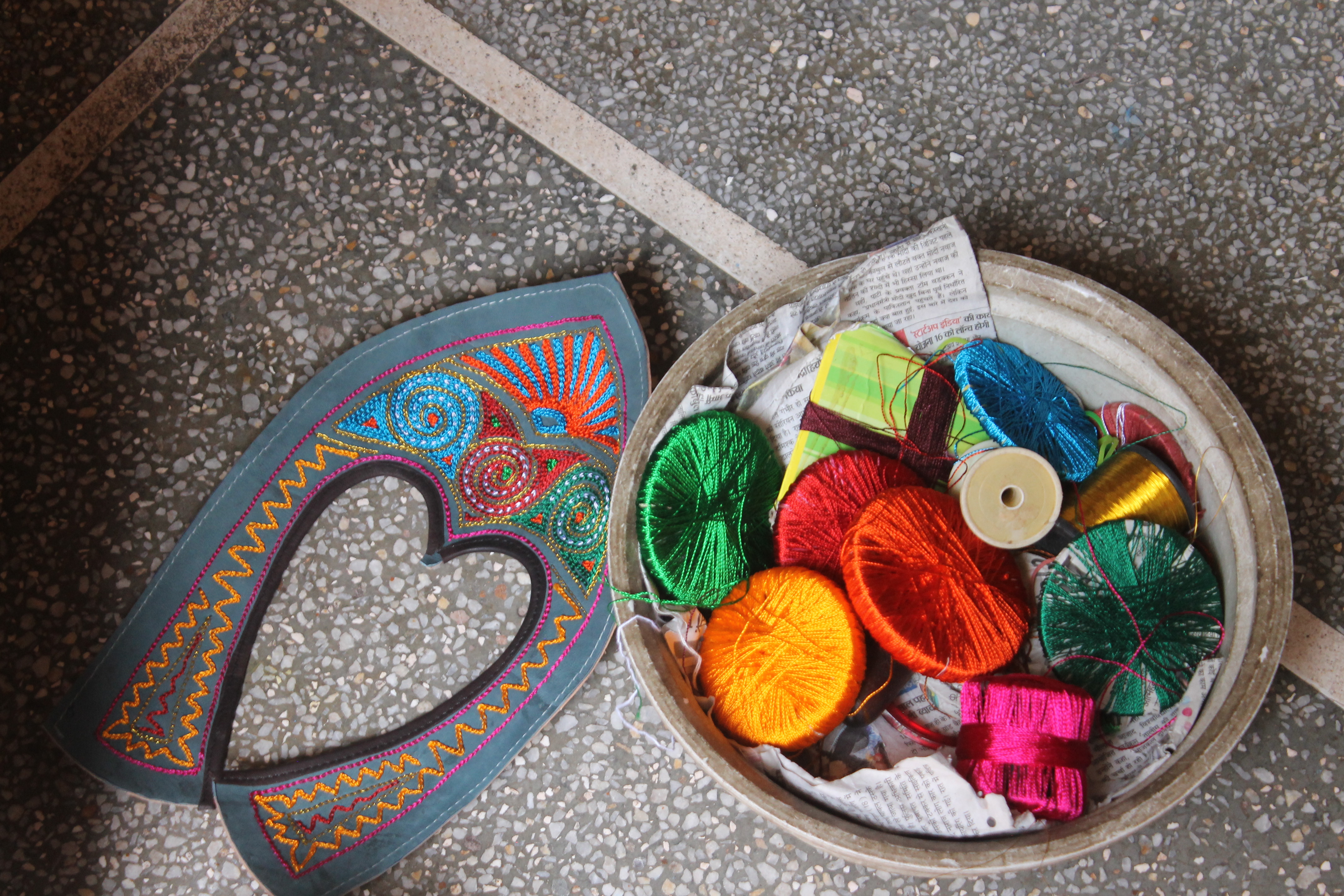
The story of Jodhpuri chappals is incredibly romantic. The metamorphosis of plain leather into a completed colourful chappal is incredibly disciplined, as much as it’s beautiful. The process of making the chappal is an example of a well-oiled factory line, where the women and men share equal responsibilities to bring out the finished product. The leather received from various parts of the state is treated and then worked on by the men, who learn the art from their fathers, and have been doing so for generations.
The soles and covers are turned into sturdy shapes to fit various kinds of feet and sizes.

Now, the women take over with their nimble fingers, creating the beautiful embroidery which makes the Jodhpuri chappal so distinct from the various footwear coming out of other parts of India.
Cooing to the infant on her lap, sought by the whistle of the pressure cooker every five minutes, an artist, from under her ghungat (veil), embroiders three to four pairs of chappals, every day.
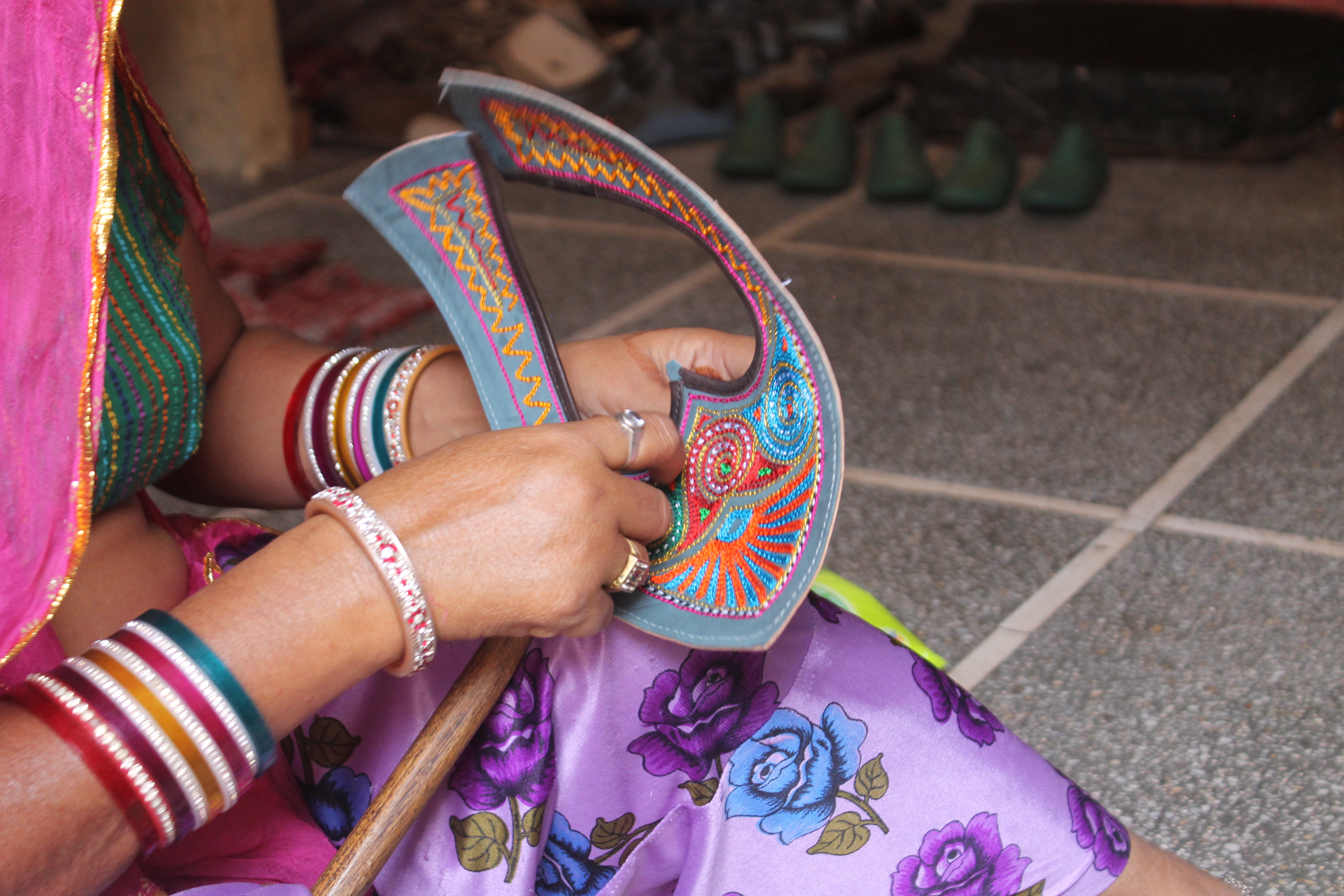
Jodhpuri chappals have adorned feet for years. Middlemen picked them from these streets, and send them in huge numbers to shops in bigger cities, especially to the metros. Suppliers provide them to the hawker at the pavement and dozens of e-commerce websites, alike. The cost of a Jodhpuri chappal ranges from ₹300-500 when bought from any of these sellers.
The artists usually receive as low as ₹30 to embroider one pair of Jodhpuris. For years, they have worked under clouds of economic disparity, and it’s not unknown to them. Quite contrary to the morose atmosphere one would expect, these artisans overwhelmingly display happiness, punctuating their everyday juggling of work with smiles.
There is an infectious camaraderie of sharing a common goal to create a craft.
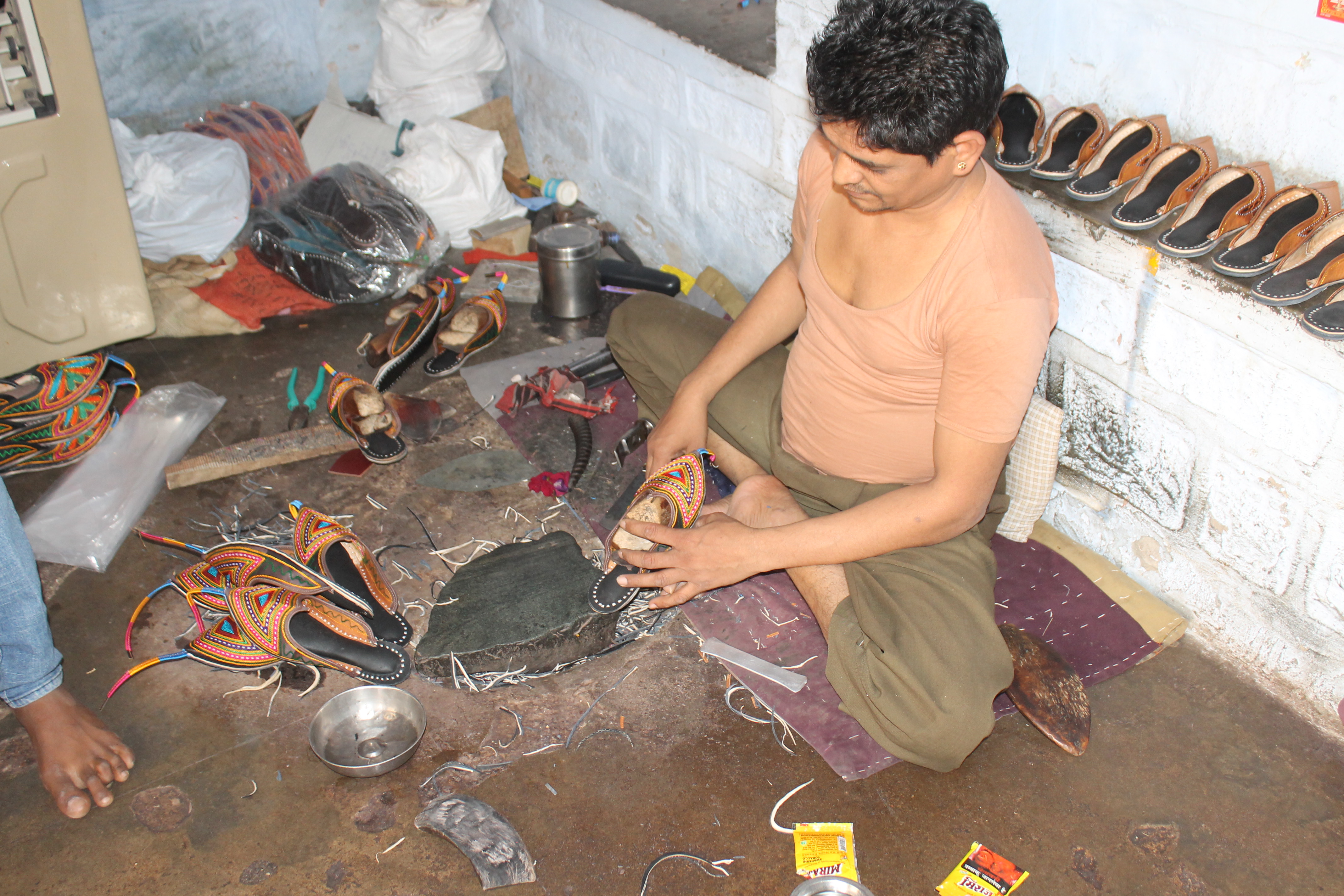
What sets this community apart is their pride in accepting themselves as heirs to a skill passed on to them for generations. The younger artists have migrated to cities (as is the story with many art forms in small cities and villages), yet many have returned to their community in recent times. Unknown to many, more often than not, economic support plays second fiddle to the appreciation and encouragement that the artist seeks.
In the last few years, some resident history guides have brought sets of tourists and visitors to the chappalon wali gali, and the difference is evident in the faces of these artists. There is no prominent support for financial independence from any individual, organization, or the government.
The artists themselves seek no aid, and are vocal about the fact that all they need is a chance at fair trade.
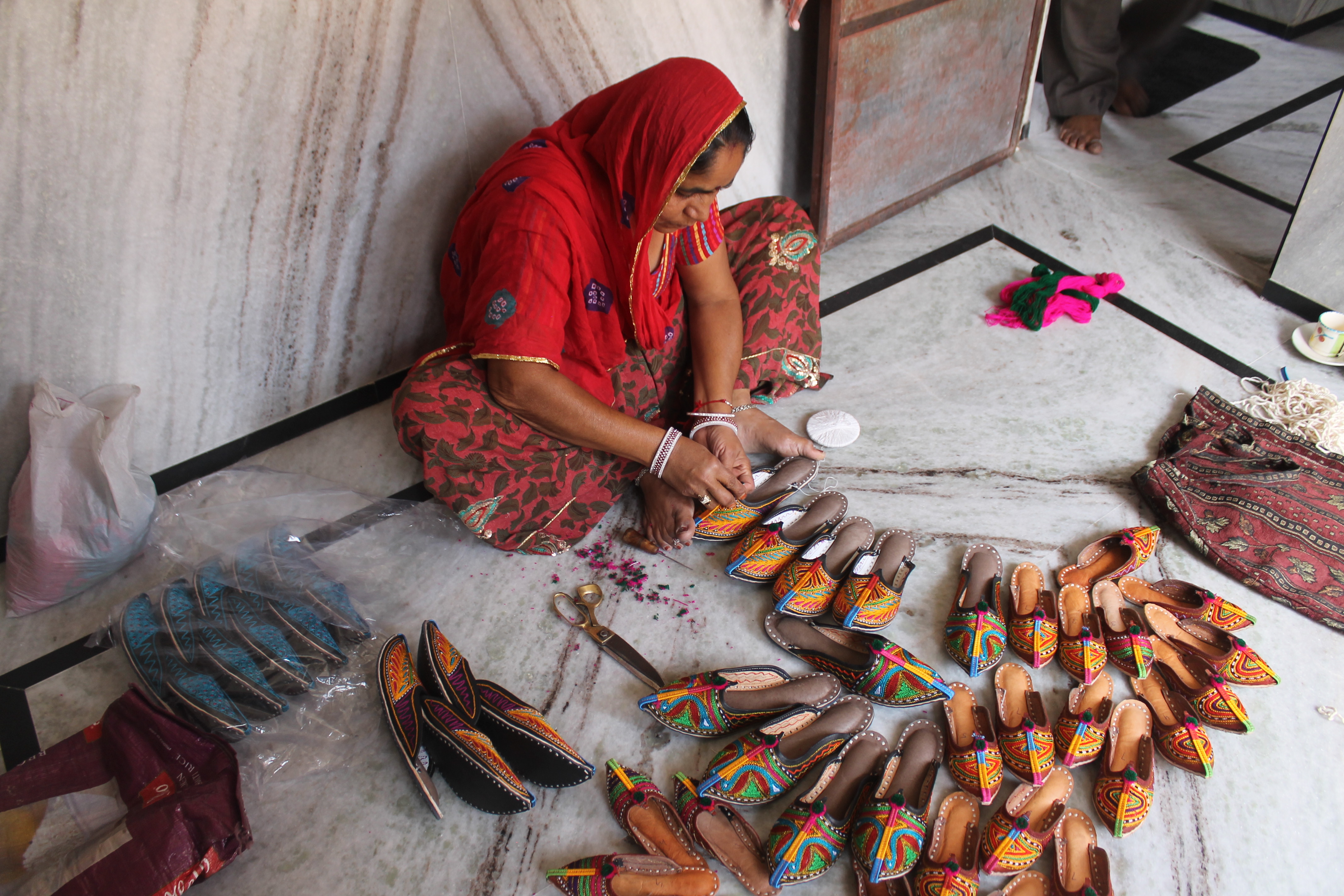
A little effort can go a long way. Whether you are a tourist, visitor, volunteer, or shopper, one can script a significant role in this movement. Jodhpur is visited by tourists all year-round. Inculcating these artists and other existing art forms as a part of the tourist trail can be amply beneficial. A visitor to Jodhpur can contribute by taking half a day out of his/her schedule to spend time with the artists. After all, chappalon wali gali is central to Jodhpur, and easily accessible.
Volunteering to help or learn the trade, and buying directly from the artisans or organizations who support fair trade for the artists, is another positive. It is heartening to see the comeback of Indian indigenous art in the lives of many Indian shopping enthusiasts. India is a kaleidoscope of handicrafts.
Exploring, learning, and being aware of this is the first big step to indigenous art conservation.
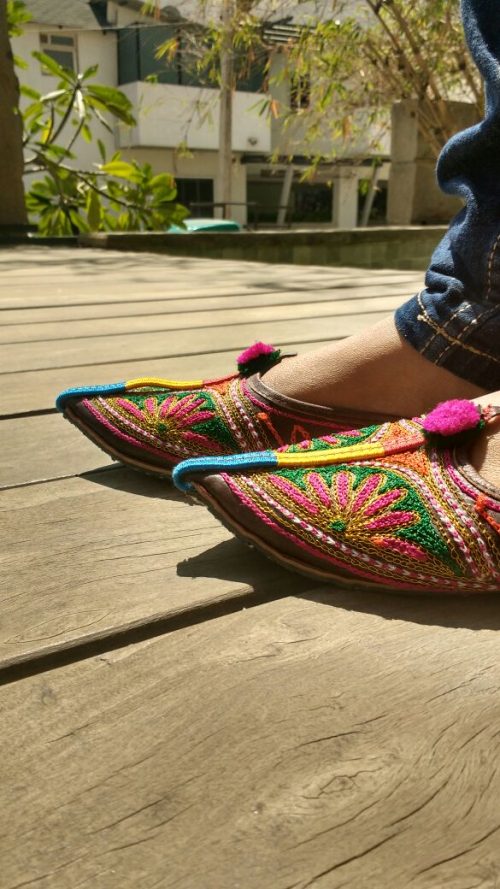
The city of Jodhpur owes as much of its glory to history as it does to the various art forms which have originated and thrived here. This includes the Jodhpuri chappals, the Bandhini sarees, leather bags, camel bone sculpting, and so much more. All it needs is an effort to explore and discover that little extra which is usually unheard of. This vibrant city welcomes explorers, connoisseurs, artists, story tellers, and wanderers,to experience art rarely found in books.
If you know any artisans/art forms that are little-known and in need of assistance, contact Project Kalayatra via email.
Like this story? Or have something to share? Write to us: [email protected], or connect with us on Facebook and Twitter.
NEW: Click here to get positive news on WhatsApp!
This story made me
-
97
-
121
-
89
-
167
Tell Us More
We bring stories straight from the heart of India, to inspire millions and create a wave of impact. Our positive movement is growing bigger everyday, and we would love for you to join it.
Please contribute whatever you can, every little penny helps our team in bringing you more stories that support dreams and spread hope.







